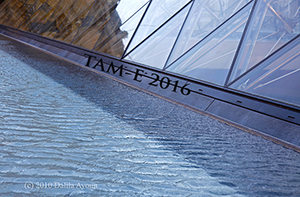This paper deals with the grammatical status of “light verbs” in Odia. These light verbs combine with a main lexical verb to build asymmetric complex predicates, e.g. khaai-delaa /eat-gave/ ‘ate it up', bhaangi-galaa /break-went/ ‘got broken', etc. They are drawn from a limited set of verbs which are, strikingly, form-identical with full lexical verbs. The Odia light verbs can be classified as follows:
(1) motion verbs: ‑jaa ‘go', ‑paD ‘fall', ‑pakaa ‘drop', ‑chaal ‘walk', ‑uTh ‘rise', ‑aas ‘come'
(2) stative verbs: ‑bas ‘sit', ‑rah ‘stay'
(3) transfer verbs: ‑de ‘give', ‑ne ‘take'
(4) finish verbs: ‑saar ‘finish'
Following the general tenets of Construction Grammar (Goldberg 2006), we have considered these light verbs as forming a network of form-meaning pairs. At the highest level, the schema takes the form V-i-v (-i- being the conjunctive particle) and its semantics centers around what Butt & Geuder (2001) have aptly called “event modulation”. In contrast to the single verb construction, the light verb adds an important perspective to the event expressed by the main lexical verb with which it combines. This modulation is different for the different verb-specific schemas which each have their own specific semantico-syntactic properties. Summarizing, these can be represented as follows:
(1) completion & unexpectedness: ‑jaa ‘go', ‑paD ‘fall', ‑pakaa ‘drop', ‑de ‘give'
(2) completion & self-beneficiary:‑ne ‘take'
(3) completion:‑saar ‘finish'
(4) pre-onset: ‑aas ‘come'
(5) onset: ‑uTh ‘rise'
(6) continuation: ‑chaal ‘walk', ‑rah ‘stay', ‑bas ‘sit'
In line with Traugott and Dasher (2002), our usage-based account sees these specific semantic characteristics as resulting from the entrenchment of contextual features, similar to what Croft (2000:126ff) has termed hypoanalysis, where “a contextual semantic/functional property [is reanalysed] as an inherent property of the syntactic unit” and we focus on the onset and continuation denoting verbs 'come', 'walk', 'sit', and 'stay' as aspectual modulators.
- Autre

 PDF version
PDF version
